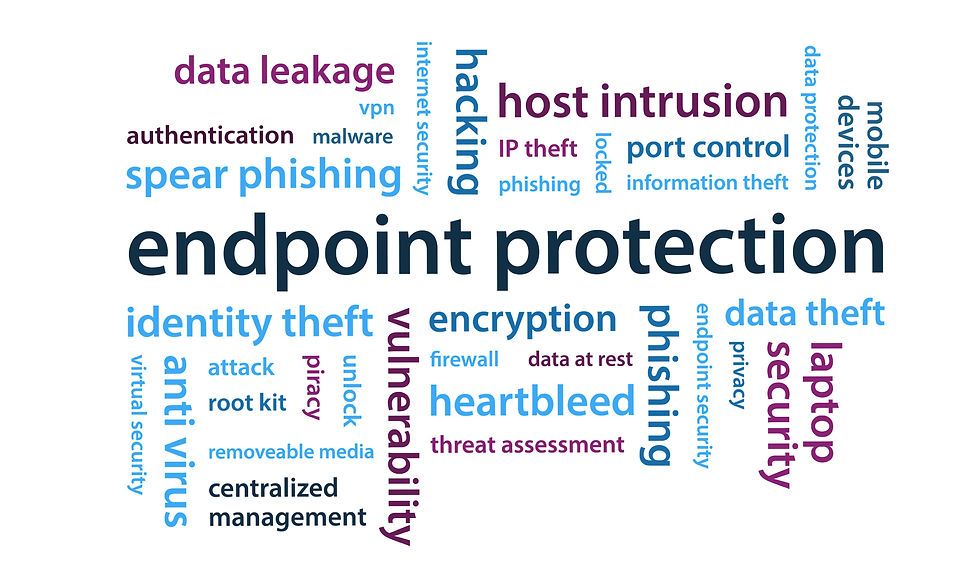[RSAC 2025] A Clear Signal on AI and the Future of Cybersecurity
- PAGO Networks

- Apr 29
- 4 min read
Updated: May 7

If RSA Conference 2025 made one thing clear, it’s that AI is no longer a theoretical concept, it’s becoming central to how cybersecurity is built and managed. Soon, it will be the basic practice and foundation of the entire industry. From keynote presentations to vendor booths, the message was consistent: artificial intelligence and machine learning are reshaping threat detection, response, and overall security operations. The tone of the event reflected both urgency and optimism, as the industry shifts from experimentation to real-world implementation.
Gamified Learning and Interactive Booths at RSA 2025
The RSA Conference 2025 transformed the traditional expo experience into an interactive playground for cybersecurity enthusiasts. Exhibitors went beyond standard presentations, incorporating games and immersive activities to captivate attendees.
One standout was called "Dataverse Defender" scavenger hunt, which challenged participants to navigate a series of objectives, blending learning with the thrill of a game. The booth also featured a video game where players guided a Data Explorer through evolving threats, highlighting the importance of data security in an engaging format.
These interactive elements not only made the expo floor more engaging but also provided memorable ways to understand complex cybersecurity concepts. By gamifying learning and incorporating storytelling, RSA 2025 showcased how fun and education can go hand in hand in the world of cybersecurity.
Future of SOC: AI & Automation

One of the standout sessions at RSA 2025 addressed the future of the Security Operations Center (SOC). The speaker wasted no time in acknowledging the challenges facing today’s SOCs: overwhelmed by alerts, understaffed, and burdened by outdated tools like SIEM and SOAR systems that were meant to simplify operations but instead added complexity.
The solution? A vision of a smarter, AI-driven SOC. In this new model, AI takes on routine tasks such as triage, investigation, and basic response, allowing human analysts to focus on more strategic aspects like threat hunting and critical thinking. The goal is not to replace people, but to enable them to focus on what they do best.
The session also introduced a framework for gradually evolving SOCs from manual operations to more autonomous, AI-supported processes. The transformation is not immediate but a step-by-step journey, starting with identifying the biggest bottlenecks.
AI-Powered Cybercrime

Another session delved into the evolving tactics of cybercriminals leveraging AI. It explored how these attackers are reshaping their operations and what this means for both offensive and defensive strategies in cybersecurity.
The speaker highlighted an unprecedented surge in AI-driven cyber activity, noting that the efficiency with which attacks are now being executed surpasses anything witnessed in over 25 years. Modern hacker groups are increasingly organized like legitimate businesses, complete with roles such as CEOs, CTOs, and developers. With AI on their side, they’re moving faster than ever, particularly in phishing, exploit development, and malware testing.
A roadmap was outlined for how AI is being weaponized in cyberattacks:
Now: AI is already automating phishing emails, exploit creation, and malware distribution.
In Two Years: AI-powered malware will begin adapting in real time based on the system it encounters. Command-and-control large language models (LLMs) will deploy dynamic payloads, adjusting to system vulnerabilities on the fly.
In 3-5 Years: AI will autonomously identify and exploit zero-day vulnerabilities, tailored to specific targets, handling the entire attack lifecycle without human intervention.
The speaker also shared a case study illustrating how they exploited GPT-3 and GPT-4’s internal logic to trick these models into revealing restricted information. This was a stark reminder that even sophisticated AI can be manipulated if attackers understand its workings.
The response to this growing threat is clear: defenders must scale their capabilities in the same way attackers are scaling their offenses. This means moving away from outdated, rule-based systems and adopting AI to detect patterns and make real-time decisions. The focus must shift from analyzing individual events to understanding behavior across entire systems.
One critical point made was the shift from “stateful” to “stateless” security. Rather than focusing on individual data packets, future tools will consider the broader context, evaluating system behavior over time, across networks, and in real-world scenarios.
Ultimately, security teams need more than just advanced tools, they must rethink their entire approach to defense. It’s not enough to simply block threats but understanding how attackers operate and staying one step ahead will be crucial.
RSA 2025 marked a pivotal shift in the industry. AI is no longer just a buzzword, it is becoming a real, tangible force in cybersecurity. Companies are no longer waiting for change, they are actively redesigning their SOCs, rethinking their technology stacks, and investing in smarter, faster defenses.
The takeaway is that AI will not magically solve all cybersecurity challenges. But when applied correctly, it can help security teams move faster, make more informed decisions, and focus on what truly matters. The future of cybersecurity will not be defined by humans or machines alone but it will be a collaborative effort, with both working side by side.









